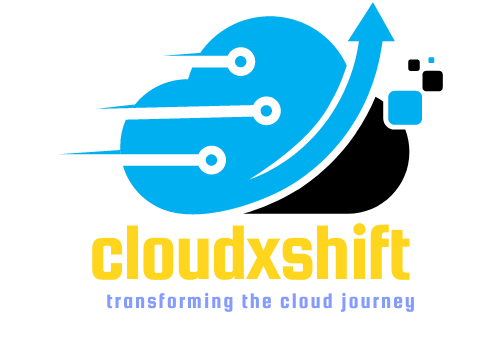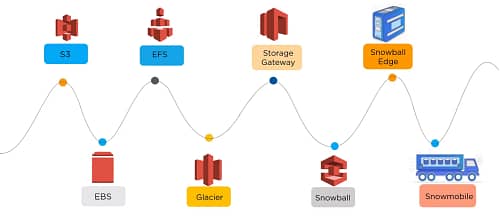-
Hybrid Cloud Migration: On Premises & Cloud Infrastructure
Introduction In today’s digital landscape, businesses are increasingly leveraging the benefits of cloud computing to drive innovation, scalability, and cost-efficiency. Hybrid cloud migration has emerged as a strategic approach for organizations seeking to balance their existing on-premises infrastructure with the agility and scalability offered by the cloud. This blog post aims to provide a comprehensive overview of hybrid cloud migration, its importance in achieving a harmonious balance between on-premises and cloud infrastructure, and the key considerations for successful implementation. 1. Understanding Hybrid Cloud Migration Hybrid cloud architecture combines the use of on-premises infrastructure and cloud services to optimize workloads based on their specific requirements. By blending the best of both…
-
Cloud Migration : Choosing Right Approach for your Business
Introduction: In today’s rapidly evolving digital landscape, cloud migration has become a critical consideration for businesses seeking scalability, flexibility, and cost-efficiency. However, embarking on a cloud migration journey requires careful planning and a well-defined strategy. In this article, we will explore the various cloud migration strategies available and help you choose the right approach for your business. Understanding Cloud Migration: Before diving into the strategies, let’s define cloud migration. Cloud migration refers to the process of transferring an organization’s digital assets, applications, data, and infrastructure from on-premises or legacy systems to the cloud. By embracing cloud technologies, businesses can leverage the benefits of scalability, agility, and accessibility. Assessing Business Needs:…
-
Cloud Migration:Essential Security Considerations
Introduction Cloud migration is the process of moving data, applications, and services from on-premises infrastructure to a cloud-based environment. The cloud offers businesses scalability, flexibility and cost savings. However during cloud migration, security should be a top priority to protect sensitive information and avoid data breaches. In this article, we will discuss the essential security considerations during cloud migration. Understand Your Security Responsibilities: One of the critical aspects of cloud security is understanding the shared security model between the cloud provider and the customer. Cloud providers are responsible for the security of the cloud infrastructure, while customers are responsible for securing their data and applications. It is essential to understand…
-
SRE:A Deep Dive into CloudXShift’s Cutting-Edge Technologies
SRE (Site Reliability Engineering) is a set of practices and principles that focus on reliability, scalability, and maintainability of systems. In this article, we will explore the SRE practices and principles that can help create highly reliable and scalable systems. SRE Practices: Service Level Objectives (SLOs): Service Level Objectives (SLOs) are critical to ensuring that a system meets the expected reliability and performance standards. An SLO is a measurable target for the availability, performance, or reliability of a system. The SLOs should be defined in collaboration with the business and the development team, and they should be realistic and achievable. SRE teams measure SLOs continuously and use the results to…
-
AWS IAM Policies: Best Practices
Introduction: IAM policies are a fundamental component of AWS IAM (Identity and Access Management). They define permissions and access levels for users, groups, and roles, allowing you to manage access to your AWS resources securely. In this article, we will delve into IAM policies and discuss their importance in securing your AWS infrastructure. IAM Policies: IAM policies are JSON documents that define permissions for IAM users, groups, and roles. Policies are attached to identities and specify which AWS resources the identity can access and what actions they can perform. IAM policies are highly customizable, allowing you to set granular permissions based on your organizational needs. IAM policies are divided into…
-
AWS Identity and Access managment
AWS Identity and Access Management (IAM) is a powerful and flexible service that provides secure access to AWS resources. IAM enables you to manage users, groups, roles, and permissions to securely control access to your AWS resources. In this article, we will discuss the various features of IAM and how to use them effectively. IAM Features: IAM has several features that allow you to manage access to AWS resources securely. These features include: Centralized Control: IAM enables you to manage access to AWS resources from a single location. You can control access to AWS services and resources for your entire organization, and you can set permissions based on your organizational…
-
Future of DevOps: Tools That Will Bring Change
DevOps is a software development strategy that incorporates agile practices for fast, efficient product creation and release. It focuses on integration of development and operations teams, continuous integration/continuous delivery (CI/CD) and automation of tasks and processes. The objective is increase the rate of changes to production in efficient manner which will help the businesses to release new features as per business demands. Typically, DevOps teams use pipelines to streamline and standardize processes. DevOps pipelines are toolchains that teams can use to automate tasks and provide visibility into the software development life cycle. In this article, we’ll cover seven popular open source CI/CD tools. How DevOps Will Change in the Near…
-
Cloud Cost Managment Best Practices
Introduction Users of Amazon Web Services are likely familiar with some cloud cost managment best practices, but probably not all of them. Consequently, we have compiled a list of the ten best practices to optimize AWS costs, and also suggest a solution that ensures the costs of using Amazon Web Services remain optimized. It’s not unusual to read headlines claiming businesses are overspending in the cloud, that a double-figure percentage of money is being wasted on unused services, or that millions of businesses provision resources with more capacity than they need. The most common “solutions” to the reported issues are rightsizing, scheduling, and purchasing Reserved Instances/Savings Plans for predictable workloads.…
-
What is cloud migration?
Cloud migration is the process of moving digital business operations into the cloud. Cloud migration is sort of like a physical move, except it involves moving data, applications, and IT processes from some data centers to other data centers, instead of packing up and moving physical goods. Much like a move from a smaller office to a larger one, cloud migration requires quite a lot of preparation and advance work, but usually it ends up being worth the effort, resulting in cost savings and greater flexibility. Most often, “cloud migration” describes the move from on-premises or legacy infrastructure to the cloud. However, the term can also apply to a migration from…




























